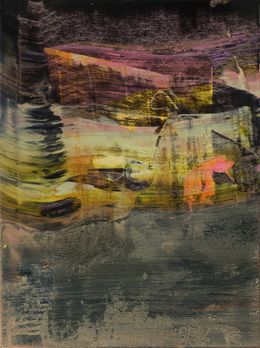
The Refuge of Memory 10
Yari Ostovany
Painting - 31.3 x 23.7 x 0.1 cm Painting - 12.3 x 9.3 x 0 inch
$1,393
Save your search and find it in your favorites
Save your search to find it quickly
Saved search
Your search is accessible from the favorites tab > My favorite searches
Unsaved search
A problem occurred

Painting - 31.3 x 23.7 x 0.1 cm Painting - 12.3 x 9.3 x 0 inch
$1,393


Painting - 39 x 30 x 0.1 cm Painting - 15.4 x 11.8 x 0 inch
$1,393

Painting - 105 x 110 x 2 cm Painting - 41.3 x 43.3 x 0.8 inch
$3,827




Painting - 65 x 50 cm Painting - 25.6 x 19.7 inch
$3,827


Painting - 60 x 40 x 1 cm Painting - 23.6 x 15.7 x 0.4 inch
$3,423


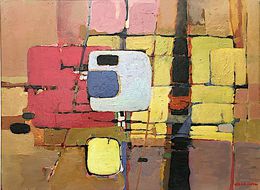


Painting - 100 x 80 x 3 cm Painting - 39.4 x 31.5 x 1.2 inch
$2,320

Painting - 40 x 80 x 2 cm Painting - 15.7 x 31.5 x 0.8 inch
$1,021



Painting - 89 x 116 x 3 cm Painting - 35 x 45.7 x 1.2 inch
$10,438

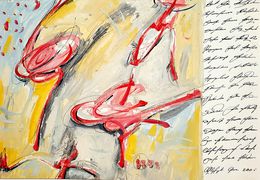


Painting - 65 x 100 x 2 cm Painting - 25.6 x 39.4 x 0.8 inch
$7,655

Painting - 65 x 80 cm Painting - 25.6 x 31.5 inch
$5,799







Painting - 30 x 40 x 0.6 cm Painting - 11.8 x 15.7 x 0.2 inch
$406


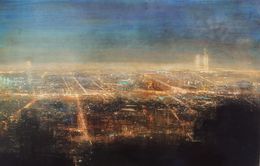
Painting - 96 x 150 cm Painting - 37.8 x 59.1 inch
$13,337


Painting - 100 x 100 x 0.3 cm Painting - 39.4 x 39.4 x 0.1 inch
$11,366

Painting - 100 x 100 x 0.3 cm Painting - 39.4 x 39.4 x 0.1 inch
$11,366

Painting - 100 x 100 x 3 cm Painting - 39.4 x 39.4 x 1.2 inch
$3,711 $3,340



Painting - 97 x 162 x 2 cm Painting - 38.2 x 63.8 x 0.8 inch
$4,929












Painting - 68 x 68 x 0.5 cm Painting - 26.8 x 26.8 x 0.2 inch
$1,624








Painting - 100 x 100 x 2 cm Painting - 39.4 x 39.4 x 0.8 inch
$2,088

Painting - 80 x 80 x 3 cm Painting - 31.5 x 31.5 x 1.2 inch
$2,667



Painting - 120 x 120 x 3.5 cm Painting - 47.2 x 47.2 x 1.4 inch
$6,379

Painting - 60 x 50 x 2 cm Painting - 23.6 x 19.7 x 0.8 inch
$900

Painting - 115.1 x 100.1 x 2.5 cm Painting - 45.3 x 39.4 x 1 inch
$2,650








Painting - 70 x 65 x 3.5 cm Painting - 27.6 x 25.6 x 1.4 inch
$3,831

Painting - 80 x 60 x 1 cm Painting - 31.5 x 23.6 x 0.4 inch
$2,088






Painting - 35 x 53 x 3 cm Painting - 13.8 x 20.9 x 1.2 inch
$4,059


Painting - 60 x 50 x 3 cm Painting - 23.6 x 19.7 x 1.2 inch
$1,740


Painting - 70 x 70 x 2 cm Painting - 27.6 x 27.6 x 0.8 inch
$1,914

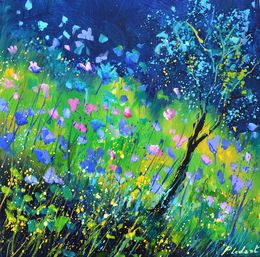





Oil painting is a type of paint which involves mixing crushed color pigments usually with linseed oil, although poppy seed oil can also be used. The support on which it is painted must be covered with a primer beforehand so that the layer of paint can adhere to the support; an additional step which is crucial to the creative process and also means that it can be adapted to many types of surfaces.
It was during the Middle Ages that oil painting first appeared and began to be developed in the Western world. The discovery of oil painting is often attributed to the Flemish painter, Jan Van Eyck who had been experimenting with various mixtures. With this new painting technique, his works benefited from new transparency effects and a new type of aesthetic was born. His approach was copied and later shared more widely by other primitive Flemish painters. Oil painting replaced the tempera technique, which uses egg as a binder.
Similarly, the wood on which artists painted was replaced by linen canvas, installed on a frame from the 15th century onwards and later placed on an easel. Although it was well-liked by painters, this medium had its drawbacks; its components were toxic and its preparation required a great amount of artisan savoir-faire in the studio. Despite this, it became closely linked to the visual arts and and was hugely popularised during the Renaissance thanks to the Venetian painters such as Titian, followed closely by the Flemish, including Rubens, before it reached the Netherlands who made it their own, with Rembrandt leading the way.
The 19th and 20th centuries saw oil painting became the number one choice and the preferred medium for for modern times. The mixture no longer had to be prepared by artists in the studio; industrialization had made things easier and the paint came pre-prepared, packaged in tubes. The tin tube was commercialized in France in 1840 and revolutionised the history of art by encouraging the Impressionists to take their brushes and paints outside and paint en plein air. It would slowly be overtaken by acrylic paint a century later which simplified things even further as it was dried faster.
An oil painting canvas also implies that the painter must respect the fat-over-lean principle, meaning that a colors with high oil content (fat) should be applied over layers of paint with lower oil content (lean) to ensure that the painting will last longer and to prevent cracking. Oil painting remains a widely used method and numerous artworks are still made using this technique.
Contemporary artists still master oil painting but sometimes avoid working with it in the same traditional ways of the 20th century. The canvas is often not prepared so that its texture can be seen under the layer of paint, as certain abstract painters have done. Jackson Pollock for example used oil painting but did not glaze his works. He didn't even truly paint his canvases as he used a dripping technique; by shaking his brush he created splashes of paint over the canvas…
On Artsper, explore contemporary paintings by well-known artists including Arman, Salvador Dali and Robert Combas.
Oil painting allows for very efficient mixing of colors and tones. Due to its long drying time, it is possible to alter an oil painting days after the paint has been applied. Oil painting also allows for precision and a range of visual effects.
Oil paint and acrylic paint are produced using different materials. While oil painting consists of pigments suspended in drying oils, acrylic paint is water-based. The main difference between the two is that acrylic paints can be thinned down with water, and dry faster than oil paints.
It is easier to correct mistakes when working in oil paint as they are more opaque than watercolors and can be easily scraped off a surface.
Choose your preferences
The art is yours
The art is yours